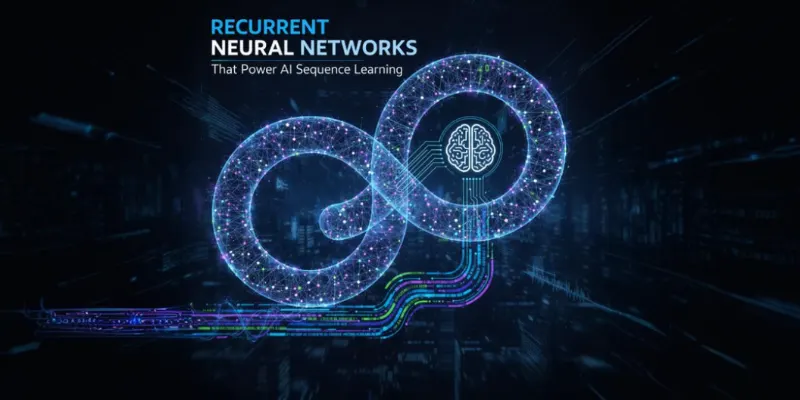
Artificial Intelligence has transformed how machines process and understand data. One of the most powerful innovations in this field is the Recurrent Neural Network, commonly known as RNN. Unlike traditional neural networks, Recurrent Neural Networks (RNNs) are built to process sequential data, which makes them well-suited for tasks where context and order are important.
Whether it’s recognizing speech, translating languages, or predicting stock prices, RNNs play a vital role in enabling machines to understand time-based or structured information. If you’re interested in learning how these technologies work and how they’re applied in real-world scenarios, enrolling in an Artificial Intelligence Course in Trivandrum at FITA Academy can be a great step, offering hands-on training that covers key concepts such as RNNs, helping you build a strong foundation in AI.
What Makes RNNs Different?
Most neural networks work by analyzing data in isolation. Each input is treated as separate and unrelated to others. This works well for images or static data, but it falls short when the order of data affects the meaning.
In “The cat sat on the mat,” for instance, the word “mat” has a distinct meaning depending on where it appears in the phrase. This kind of dependency on order is where RNNs shine. They are specifically built to remember what came before and use that information to understand what comes next.
How RNNs Work
At the core of RNNs is the concept of memory. Unlike standard neural networks, an RNN passes information from one step of the sequence to the next. It does this through what is called a “hidden state.” This hidden state carries information about previous steps, helping the network maintain context. For those who want to explore these concepts in depth, joining an Artificial Intelligence Course in Kochi can provide valuable insights into how RNNs function and their functional applications in various industries.
For every new input, the RNN updates its hidden state. This allows it to build a form of short-term memory that can track patterns across time. This capability makes RNNs effective in recognizing sequences, such as patterns in time-series data or dependencies in sentences.
Real-World Applications of RNNs
RNNs have found wide use in industries where understanding sequences is essential. A prevalent use case is language modeling, which aims to forecast the following word in a sentence. This is the foundation for tasks like machine translation, text generation, and autocomplete features.
In speech recognition, RNNs help convert spoken language into text by processing audio as a sequence of sound waves. They are also used in music generation, where the model learns patterns in melody and rhythm.
Another significant use case is in financial forecasting, where RNNs analyze sequences of stock prices or economic indicators to predict future trends. In healthcare, they assist in monitoring patient data over time to detect potential health risks.
Strengths and Limitations
The biggest strength of RNNs is their ability to handle sequential input with temporal dependencies. They are especially suited for tasks where past information influences the current decision. However, RNNs are not without limitations. In order to better grasp these advantages and disadvantages, taking an Artificial Intelligence Course in Pune can help you use your knowledge in practical situations by providing you with practical experience with RNNs and other fundamental AI models.
One of the major challenges with traditional RNNs is that they struggle to remember long-term dependencies. As the sequence becomes longer, earlier information tends to fade, making it harder for the network to retain context from the beginning of the input. This is known as the vanishing gradient problem, which affects how well the model learns from distant data points.
To address this, advanced variants like Long Short-Term Memory (LSTM) and Gated Recurrent Units (GRU) have been developed. These architectures include built-in mechanisms that help retain information over longer sequences and reduce the fading of important data.
The Future of Sequence Modeling
RNNs were a breakthrough in teaching machines to understand sequence-based data. They opened the door to more advanced models that continue to push the boundaries of what artificial intelligence can achieve.
Today, newer architectures such as Transformers are gaining popularity due to their ability to handle long sequences more efficiently. Even so, RNNs remain an important foundation in AI, especially in applications where computational simplicity and sequence understanding are key.
Recurrent Neural Networks have significantly advanced how AI handles sequential data. Their ability to remember and use past information has made them essential in areas like language processing, speech recognition, and financial forecasting. If you’re interested in exploring how these models are applied across various industries, enrolling in an Artificial Intelligence Course in Chandigarh can establish a strong basis and hands-on abilities to engage with advanced AI technologies such as RNNs.
Understanding the core idea behind RNNs helps us appreciate how machines are learning to process information in ways that resemble human understanding. Although modern technologies may keep advancing, RNNs still play an essential role in the realm of artificial intelligence.
Also check: Reinforcement Learning Explained a Core Concept in Artificial Intelligence